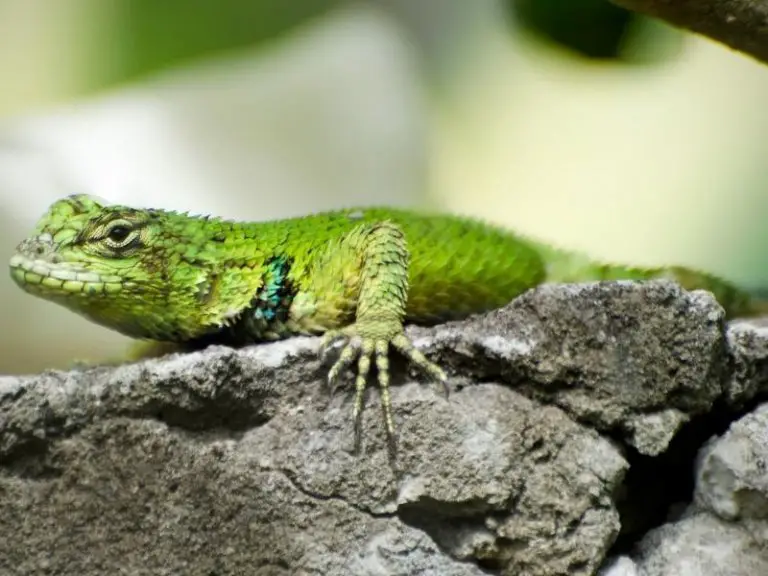
Description:
Scientific name: Sceloporus malachiticus
Life span: 5-10 years
The Phrynosomatidae family includes the small lizard species known as Sceloporus malachiticus, sometimes known as the green spiny lizard or emerald quick. Emerald swifts are strikingly brilliant green in appearance, and the males tend to be more striking than the females due to their bright blue belly patches. Its scales, like those of other Sceloporus species, have a prickly feel due to their propensity to be fairly stiff and extensively keeled.
Native Region/Habitat
From the Yucatan Peninsula of Mexico to Guatemala, Belize, Honduras, Nicaragua, Costa Rica, El Salvador, and Panama, the emerald swift can be found.

Behavior:
Diurnal and arboreal lizards are emerald swifts. They hunt for insects in the early morning, then spend the majority of the day basking in the sun. If the temperature rises too much or if they need to sleep, they will withdraw behind a burrow, a rock, or a log. It is thought that they live for three to five years. Emerald swifts are ovoviviparous, giving birth to six to fifteen young yearly, unlike the majority of iguanid lizards.
Care As a pet/In captivity:
Enclosure Size:
A single emerald swift is best kept in a 20-gallon terrarium. Because these active lizards prefer the room to move around and scamper, if housing two emeralds together, increase the tank size by at least two to three times. Preferable enclosure dimensions are 36 inches long, 18 inches wide, and 18 inches tall.
A long, narrow terrarium is ideal for simulating the lizard’s natural habitat because it has ample length for tree limbs, height for plants, and floor area for sunbathing pebbles or a heating pad.
Temperature and Humidity:
There should be two temperature zones in the terrarium for the emerald swift. 75°F should be the average temperature in the “forest” region, which should also be adorned with huge rocks for hiding and branches for the lizard to climb. An 80°F temperature should be maintained in the space used for basking. The tank temperature may decrease at night when the lights are turned off, but it shouldn’t fall below 68–69 F. An all-night heating pad is required in cold climate zones to maintain the proper temperature ranges.
Every day, spritz your emerald swift as well as the plants and branches in the terrarium to improve humidity and reduce needless shedding. Make sure the enclosure’s humidity is consistently between 60% and 80% using a hygrometer; picture a tropical rainforest. The “sticky” humidity zone that is clammy but not wet is what the emerald swift need. Make sure the enclosure’s humidity is consistently between 60% and 80% using a hygrometer; picture a tropical rainforest. The “sticky” humidity zone that is clammy but not wet is what the emerald swift need.
Food and Water:
Being insectivores, emerald swifts should be fed a variety of insects, such as mealworms, mealworm beetles, hornworms, discoid, dubia, red runner roaches, waxworms, black army fly larvae, and crickets. The size of the insects shouldn’t exceed the distance between the lizard’s eyes. Adults should be given as many insects as they can consume in 15 to 20 minutes every other day. Emerald fast young need to be fed twice daily. To prevent your emerald swift from gaining weight, remove any extra insects that the adult or juvenile lizard doesn’t consume in the 15 to 20 minutes.
In a big, shallow dish, the emerald swift needs clean drinking water. The bowl’s broad surface area contributes to the terrarium’s increased humidity. Every day, the emerald swift should have fresh water, and the bowl should be cleaned with a disinfectant safe for reptiles on a weekly basis or as needed. The emerald swift also has to be misted twice day with room temperature water in addition to the fresh standing source of water.
Table





